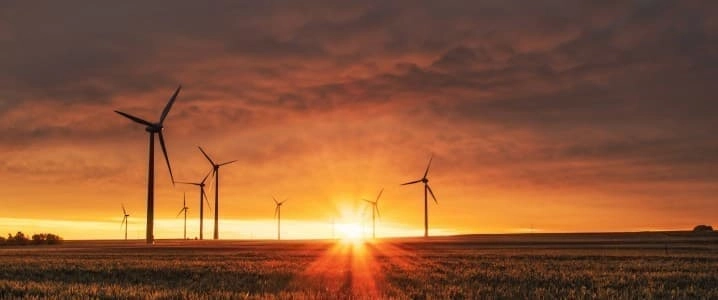- BP has sold its US onshore wind power business, indicating a strategic shift away from renewables and back towards its traditional oil and gas operations.
- This move by BP reflects a broader trend in the energy industry where major companies are re-evaluating the financial viability of low-carbon energy projects due to lower-than-expected returns.
- The article highlights challenges facing wind and solar companies, including political factors like President Trump's energy agenda, which are impacting the sustainability of renewable energy projects.

BP has sold its onshore wind power business in the United States. The news comes amid a steady flow of reports that both wind and solar companies are in major trouble, thanks to President Trumps energy agenda and a small but meaningful Republican majority in Congress. It is the latest in a string of developments that raise questions about the financial sustainability of transition energy projects.
For BP, the move represents another step away from wind and solar and back to oil and gas, as indicated by the companys senior management repeatedly over the past year. In the broader industry context, it is indicative of the overall retreat of Big Oil from business ventures that do not yield the expected profits, even with the subsidies that governments are willing to shower over businesses involved in wind and solar.
We have been clear that while low carbon energy has a role to play in a simpler, more focused bp, we will continue to rationalize and optimize our portfolio to generate value. BPs vice president for gas and low-carbon energy, William Lin said in comments on the news of the divestment. It involved a portfolio of 1.3 GW in already existing capacity, which will now join the portfolio of LS Power, the buyer.
Indeed, BP has been clear that it is going back to what it does best and what makes it money, especially at a time of rife speculation in the media that the company should put itself up for sale and let Shell buy it because thats the tie-up that makes the most sense. Shell has denied the news, quite officially, but it is a fact that BP is not in as good a shape as it could beand some are blaming its transition course, charted by now former CEO Bernard Looney.
Under Looney, BP struck off into the green direction with determination and a whole new set of priorities. The company promised to decarbonize fast and furiously and go from being a Big Oil major to a Big Power major in a matter of a few short years. It did not work. Less than five years after the initial announcement of the green pivot, BP scrapped its ambition to boost its power generation from wind and solar 20-fold by 2030 and abandoned earlier plans to reduce oil and gas production to cut emissions this year.
All this happened early in the year as evidence mounted that wind and solar may be a noble goal, but they are not a money-making business, at least not on the scale that oil and gas generate profits. Then the Trump factor came on stage, and it came with a bang. The U.S. president has made no secret of his aversion to wind power, and one of the first things he did when he came into office was to suspend new turbine construction, likely causing major panic among developers who assumed their projects would be secure.
Indeed, there is sound reason for panic. A recent report by Enverus found that just 57% of wind power projects in the United States would survive the One Big, Beautiful Bill. This means that as much as 43% are under threat of getting destroyed by the end of subsidies, but solar is doing even worse Enverus estimated that just 30% of solar capacity is resilient to the end of subsidies.
It appears BPs management is acutely aware of these developments. It is also on course to generate $20 billion from various divestments per strategic plans made public earlier this year. For this year, the divestment target is between $3 and $4 billion, with $1.5 billion already completed by April. The company did not disclose the size of the wind divestment deal.
Meanwhile, BP is moving back to Libya, which it left along with other supermajors when the civil war broke out over a decade ago. Earlier this month, the company signed a preliminary deal with the National Oil Corporation for the redevelopment of two big fields in the Sirte Basin. BP will also reopen its office in the country by the end of the year, the Financial Times reported.
Out of wind and solar and back to oil and gas, the course seems to be for Big Oil. Yet this is not the complete picture. The supermajors have invested heavily into their diversification into things like power generation from low-carbon sources, carbon capture, and other alternative energy sources, mostly under pressure from governments but also, probably, out a genuine desire to diversify in order to become more resilient in the long run.
The problem with the wind and solar venture was that it did not generate the returns its advocates promised. Wind and solar energy were to be simultaneously cheap for the consumers and profitable for the producers, even though the two were mutually exclusive by definition. Big Oil has realized this. BPs divestment is the latest acknowledgment of the fact. But not all is lost for the transition fans. TotalEnergies just announced a major wind power project in Kazakhstan.
By Irina Slav for Oilprice.com
More Top Reads From Oilprice.com:




